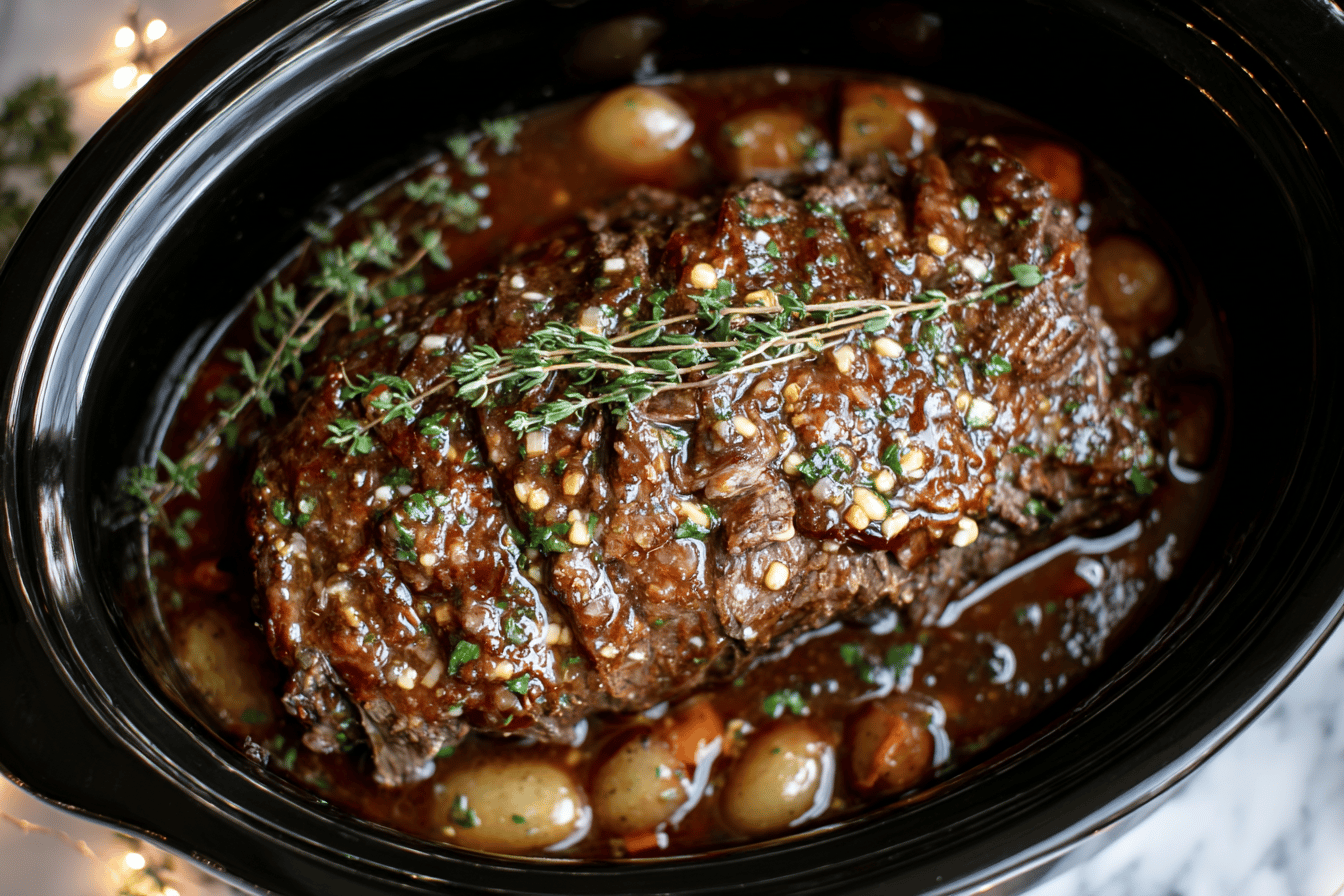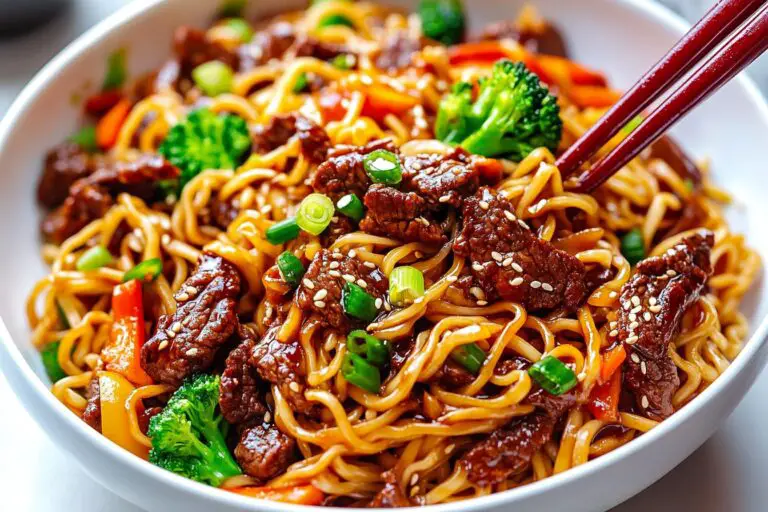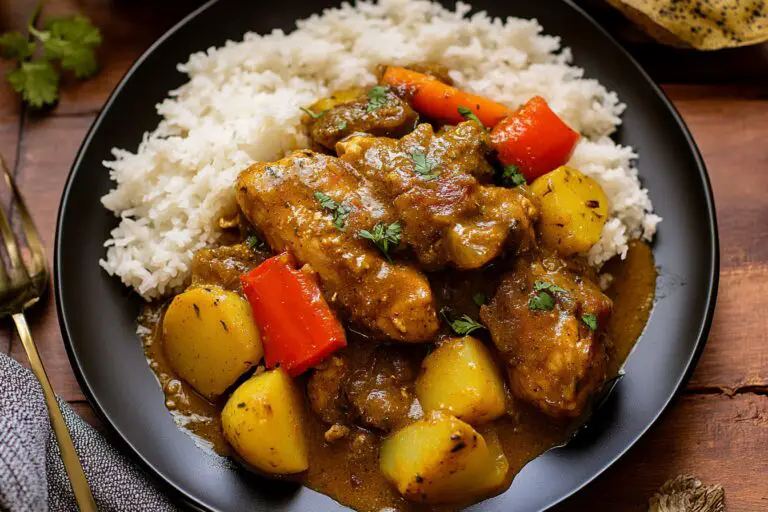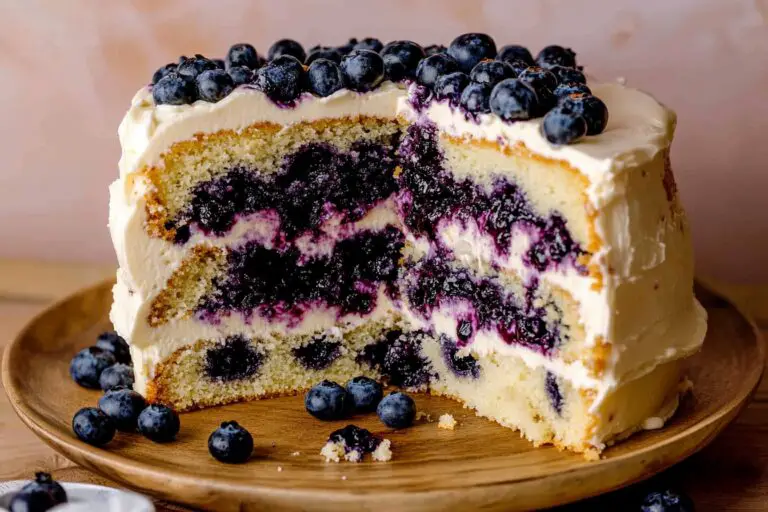Slow Cooker Beef Stew
Introduction
Finding comfort in hearty meals during the cold months is an undeniable pleasure, and winter crockpot meals are a wonderful way to bring both convenience and warmth to your table. Not only do they save time and effort, but these dishes also allow flavors to develop beautifully as they cook slowly throughout the day. The recipes featured in this collection are as cozy as they are delicious, perfect for sharing with family or savoring on a brisk evening. Let’s delve into the details of what makes these recipes so special.
Recipe
Detailed Ingredients with Measures
Each recipe is thoughtfully designed, with carefully selected ingredients to provide a balance of flavors and textures, all while making the most of wholesome, accessible pantry staples. Here’s what you’ll need for a comforting winter crockpot dish.
– Chicken thighs or beef chuck roast, depending on your preference
– Carrots, peeled and chopped
– Yellow onion, thinly sliced
– Baby potatoes or diced sweet potato
– Garlic cloves, minced
– Tomato paste
– Beef broth or chicken stock
– Worcestershire sauce
– Dried thyme or fresh sprigs
– Bay leaves
– Salt and pepper to taste
These basic ingredients can be tweaked based on personal preferences or seasonal availability. Feel inspired to experiment while still holding on to the essence of the recipe.
Recipe
Prep Time
The preparation process is straightforward and efficient. Most recipes require only 15 to 20 minutes of prep time, during which you’ll chop the vegetables, season the meat, and set the foundation for slow cooking magic. Your crockpot ensures you’ll do minimal work while reaping maximum flavor.
Recipe
Cook Time, Total Time, Yield
Cook time generally ranges from 6 to 8 hours on low heat, depending on your desired tenderness and the specific recipe chosen. Total time, including prep, transforms this experience into a practical and fuss-free solution for busy days. As for serving size, most crockpot winter meals yield approximately 4 to 6 portions, making them ideal for family gatherings or meal prep for the week.
Enjoy the delicious simplicity and unrivaled comfort that these recipes bring to your home this winter season. Let your crockpot work all day so that you can relax and indulge in a warm, hearty meal when it’s time to dig in!
Detailed Directions and Instructions
Step 1: Prepare Your Ingredients
Chop any necessary vegetables to the required size and shape, such as diced onions, minced garlic, or sliced carrots, and have all ingredients ready before starting. Ensure meats are trimmed and seasoned as necessary.
Step 2: Grease or Prep the Slow Cooker
Lightly grease the interior of the crockpot with a non-stick spray or a thin coating of oil to prevent sticking and make cleaning easier.
Step 3: Layer Ingredients Appropriately
Place ingredients into the slow cooker in the correct order. For example, hard vegetables like potatoes and carrots often go at the bottom as they require more cooking time, followed by proteins like chicken or beef, with liquids like broth or sauce poured over the top.
Step 4: Add Seasonings and Spices
Sprinkle herbs, seasonings, and spices evenly across the ingredients. Stir gently if the recipe calls for it; otherwise, leave layers intact for different textures.
Step 5: Cover and Cook at the Specified Setting
Place the lid securely on the crockpot. Select the appropriate temperature setting: low for a longer, deeper flavor (6–8 hours), or high for a quicker cook (4–6 hours), based on the recipe’s recommendation.
Step 6: Avoid Opening the Lid During Cooking
Open the lid only if required for stirring or adding specific ingredients later in the cooking process, as specified by the recipe. Each time the lid is opened, it slows down cooking and releases heat.
Step 7: Check for Doneness
Close to the end of the cooking time, check proteins and vegetables for doneness using a fork, thermometer, or visual cues, as recommended by the recipe. Adjust cooking time as needed if the dish requires longer.
Step 8: Adjust Seasoning
Taste the dish and adjust salt, pepper, or other seasonings if necessary. Be careful not to over-season; start with small adjustments and build as needed.
Step 9: Serve and Garnish
Transfer the cooked food to serving dishes. Add optional garnishes such as fresh herbs, shredded cheese, or toasted nuts to enhance the dish’s flavor and presentation.
Step 10: Clean the Slow Cooker
Once cooled, clean the crockpot with warm soapy water. If food is stuck, soak the pot with water and dish soap before scrubbing gently with a sponge.
Notes
Note 1: Use Fresh Ingredients
Whenever possible, use fresh produce and high-quality proteins for the best results in flavor and nutrition.
Note 2: Plan Ahead
Slow cooking requires time, so ensure you allocate sufficient hours for the meal to finish cooking based on the recipe settings you’ve chosen.
Note 3: Avoid Overcrowding
Do not overfill the crockpot, as this can affect cooking performance. Leave at least an inch or two of space between the lid and the top of the ingredients.
Note 4: Allow Cooling Before Storing
Let leftovers cool completely before transferring them to airtight storage containers and placing them in the refrigerator or freezer.
Note 5: Avoid Cooking Frozen Meats
For food safety, thaw meats fully before adding them to the crockpot, as cooking frozen proteins directly can lead to uneven cooking and risks.
Note 6: Keep Liquids in Mind
Slow cookers retain liquid during cooking, so in most recipes, you’ll need less liquid than in standard stovetop cooking.
Note 7: Use a Meat Thermometer
For meats, use a meat thermometer to ensure safe cooking temperatures are reached, particularly for chicken, pork, or large roasts.
Note 8: Experiment With Flavors
Feel free to customize recipes with new spices, herbs, or additional ingredients to create unique variations of your favorite dishes.
Note 9: Pre-Browning is Optional
While slow cooking eliminates the need for browning, searing meats like beef or chicken in a skillet before adding them to the crockpot can enhance flavor and texture.
Note 10: Avoid Overcooking
Keep track of cooking times to avoid overcooking proteins or vegetables, which can affect texture and taste.
“`html
Cook Techniques
Prepping Ingredients Ahead of Time
One important technique for crockpot cooking is prepping your ingredients ahead of time. Chop vegetables, measure out your spices, and prepare any proteins you’ll be using to save time on those busy mornings.
Layering Ingredients Properly
When using a crockpot, layering ingredients is key to ensure even cooking. Place denser ingredients, like root vegetables, at the bottom and more delicate ingredients towards the top.
Using the Correct Crockpot Temperature
Understanding when to use the low or high setting on your crockpot is vital to achieving perfect results. Low and slow cooking is great for tougher cuts of meat, while high heat works well for quicker meals.
Thickening Sauces and Broths
For soups, stews, and casseroles, you might want to thicken the sauce or broth. Use a cornstarch slurry, mashed potatoes, or even cream to create the desired consistency.
Adding Dairy Ingredients at the Right Time
To prevent curdling, always add ingredients like milk, cream, or cheese during the final stages of cooking.
Browning Meat Before Cooking
To enhance flavor, brown your meat in a skillet before adding it to the crockpot. This step creates a richer depth of flavor in your dishes.
Not Overfilling the Crockpot
Avoid overfilling your crockpot. Leave some space at the top for steam and to ensure even cooking for all the ingredients.
FAQ
Can I use frozen ingredients in my crockpot recipes?
It’s best to thaw frozen ingredients before adding them to your crockpot to ensure even cooking and reduce the risk of food safety issues.
Do I need to stir my crockpot meals while cooking?
Typically, stirring crockpot meals is not necessary as the long cooking time allows for consistent flavors throughout. However, follow the specific recipe instructions.
How much liquid is needed for crockpot cooking?
Unlike stovetop methods, crockpots retain moisture. You generally need less liquid than usual, but ensure there’s enough to prevent burning.
Can I leave my crockpot meal cooking overnight?
Yes, as long as you follow the recipe and check for safety precautions like not leaving perishable ingredients out for too long after cooking.
How do I keep my crockpot meal warm for serving?
Most crockpots have a “keep warm” setting, allowing you to maintain the food’s temperature without overcooking it.
What’s the difference between low and high crockpot settings?
The low setting cooks food at a lower temperature over a longer period, while the high setting cooks food faster at a higher temperature.
Can I convert stovetop or oven recipes for a crockpot?
Yes, most recipes can be adapted for a crockpot by adjusting the time and liquid amounts. Use the low or high setting based on how long the original recipe cooks.
“`
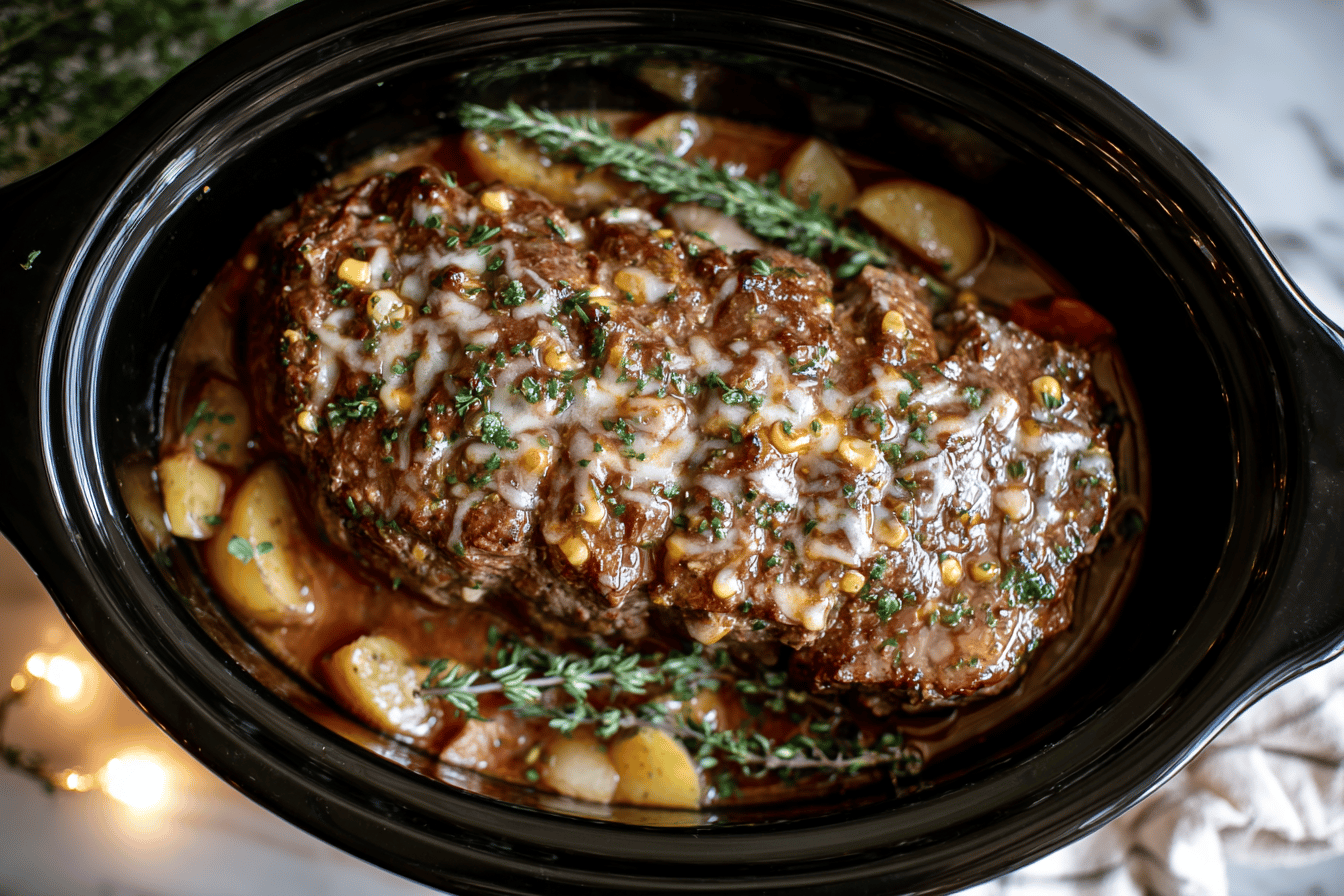
“`html
Conclusion
Winter crockpot meals are a delightful way to enjoy comforting, wholesome dishes with minimal effort. Using a slow cooker allows you to create hearty recipes that warm the soul, perfect for cold winter days. From stews to soups and beyond, the options are endless, ensuring you’ll always have something to look forward to. Experiment with flavors, and let the crockpot work its magic for delicious results every time.
More recipes suggestions and combination
Hearty Beef and Vegetable Stew
A simple yet satisfying combination of tender beef chunks, seasonal root vegetables, and flavorful herbs make this a perfect winter classic.
Slow Cooker Chicken and Dumplings
Turn this Southern comfort food into an easy crockpot version to enjoy moist chicken and fluffy dumplings in a creamy broth.
Pulled Pork Chili
Add a twist to your traditional chili with slow-cooked pulled pork, beans, and a smoky, slightly spicy tomato sauce.
Mushroom and Barley Soup
An earthy, comforting vegetarian option combining rich mushrooms, barley, and a medley of herbs and spices.
Turkey and Wild Rice Casserole
Transform leftover turkey into a hearty meal by slow-cooking it with wild rice, vegetables, and a creamy sauce for a cozy dinner.
Butternut Squash and Lentil Curry
Combine lentils and butternut squash with curry spices to create a warming dish packed with flavor and nutrition.
Slow Cooker Meatball Stroganoff
Enjoy tender meatballs in a creamy stroganoff sauce served over pasta or rice for an indulgent crockpot meal.
Creamy Potato Soup
This ultra-comforting soup is rich and creamy, with tender potatoes and a touch of bacon for extra flavor.
Beef Bourguignon
Upgrade your crockpot game with a slow-cooked French classic featuring beef, red wine, and vegetables simmered to perfection.
Vegetarian Chili with Sweet Potatoes
Sweet potatoes, beans, tomatoes, and warming spices come together in a crowd-pleasing vegetarian chili option.
“`

